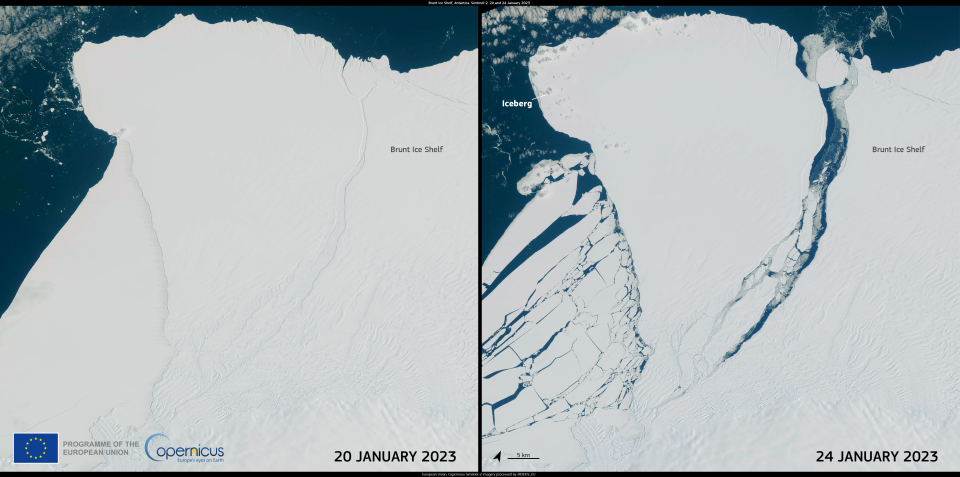Publié le 26 janvier 2023

This image was acquired on 20 and 24 January by one of the Copernicus Sentinel-2 satellites and shows the newly formed iceberg, named Chasm1, floating in the Weddell Sea.
Click here to view the image at full resolution.
Iceberg calving is a natural process that occurs when the ice shelf reaches a certain size and the ice at the front edge breaks off. Scientists are closely monitoring the Brunt Ice Shelf and other ice shelves in Antarctica as global warming can lead to an increased number of calving events and contributes to sea level rise.
Copernicus open data are key for tracking the movement of icebergs drifting in the ocean and the monitoring of remote environments such as Antarctica.
Source:
Copernicus. (2023c, January 25). The calving of the Brunt Ice Shelf. Image of the Day. https://www.copernicus.eu/en/media/image-day-gallery/calving-burnt-ice-…